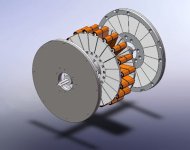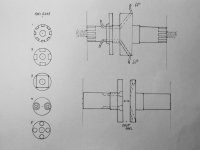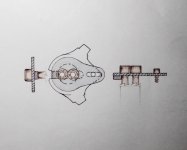Just a thesis, but:APL said:Another damn flying machine, that uses a circular wing, and has a radial fan in the middle to blow air
outward over the wing. Why? I haven't seen it tried yet.
https://core.ac.uk/download/pdf/40026947.pdf
Just a thesis, but:APL said:Another damn flying machine, that uses a circular wing, and has a radial fan in the middle to blow air
outward over the wing. Why? I haven't seen it tried yet.
APL said:'Paper punch tape' thats funny!
APL said:Those things remind me of a zombie movie! Is it just me? :|
APL said:A phone should be a phone.
wturber said:I keep the alarms and audio off and have a Pebble smart watch that notifies me about calls, texts etc. I glance at my watch to see if I care to deal with it now, later, or not at all.
“Far out in the uncharted backwaters of the
unfashionable end of the western spiral arm of the
Galaxy lies a small unregarded yellow sun. Orbiting
this at a distance of roughly ninety-two million miles
is an utterly insignificant little blue green planet
whose ape-descended life forms are so amazingly
primitive that they still think digital watches are
a pretty neat idea.”



Sure, you can still ahve a slotted frame mount, but just like a bike axle / dropout it doesn't have to resist torque.APL said:There still needs to be a slotted frame mount for them to go in, for chain tension. I would think.
Simpler...no...and depending on thicknesses and material strengths and precision of fit, axle flats can support quite a lot of torque. It's not so much the watts as the Nm.I really don't like the flats either, but I thought for a thousand watts of power they might do. And I don't have any better,
simpler ideas at the moment.
Axels can only be as large as the bearing ID diameter. In fact the right drive side has to be less than the drive cog system,
that slides over it, around 28mm.
A splined torque arm system would work on the left side nicely, but there isn't always room on the right side for anything substantial.
Perhaps, but then the axle could experience twisting forces along it's lenght, which is what broke at least one of the axles on my trike (where the flats on one side didnt' fit as precisely, so that end of the axle all the way to the start of the flats of the other end was able to twist, while the flats that were precisely clamped couldn't, and eventually that broke the axle at that point.).Perhaps one side would be enough?
No, they don't have to go *through* the axle.The wires have to go through the axle one way or another,

